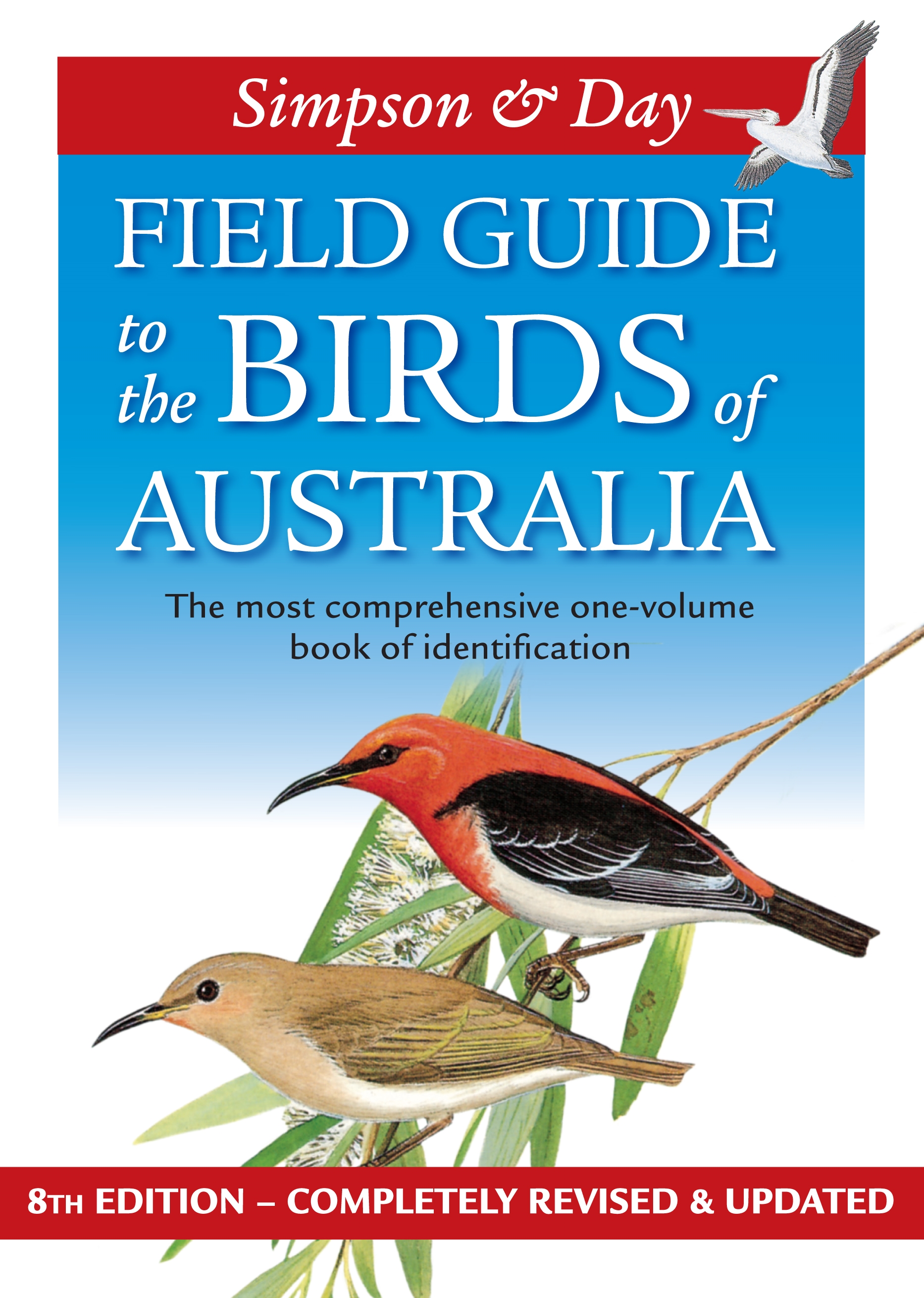Book review: new edition of a popular bird field guide

Simpson and Day Field Guide to the Birds of Australia 8th edition
Many of my readers here possibly do not know that I am a passionate birder. In fact, I write a very popular birding blog called Trevor’s Birding (click here). It is one of the most popular of its type with many hundreds of daily visitors. Heaps of photos too.
One of the essential tools of every birder (bird watcher) is a reliable field guide. These books illustrate each of the bird species found in a particular country or region. I have about 10 such books covering Australia, south east Asia, the Indian sub-continent and Europe.
In Australia we are blessed with a number of great field guides. With over 500,000 copies sold since the first edition in 1984, the Simpson and Day Field Guide to the Birds of Australia has proved to be one of the successful guides. Today sees the publication of a new, fully revised and updated 8th edition.
I’ve written an extensive review of this guide on my birding blog here.
The guide has been published by Penguin Books Australia.
Book review: Himalayan Adventures

.
My supervising lecturer recently gave me this book to read. She thought it could be of some use in the writing of my children’s novel which is also set in Nepal. Himalayan Adventures written by Penny Reeve is a charming little book (of only 96 pages) which deals with various aspects of life in Nepal. Each chapter is a self contained story about an animal, bird or some commonplace aspect of village life. There is little connection between each chapter.
The stories are short and written in a narrative style with minimal dialogue. Each is an object lesson in living the Christian life as seen by the author who served as a health professional with a mission organisation in Nepal. While each story is charming in its own way, I would like to have seen some connection between each chapter, such as the same children appearing in each story. This would have allowed more use of dialogue which would also have improved the book.
This book has not been of much value in writing my own children’s book about Nepal because it is so different from what I am trying to do with my story.
Reference:
- Reeve, Penny 2005, Himalayan Adventures, Christian Focus Publications, Ross-shire, Great Britain.
Book review: “Bird by bird” by Anne Lamott

.
I bought this book some time ago but only recently finished reading it. I had read about it in many other books about writing. Everyone raved about how wonderful the book was and so I thought I’d treat myself.
I must say that, as a book about writing, it disappointed me at first. I guess I was looking for another guide book about writing, giving step by step instructions on how to write a novel, or a short story or whatever. This book is not like that. It is not something one can read from cover to cover and come away knowing everything there is about writing.
Instead, it is the kind of book that creeps in under your guard, sneaking into your pores and inhabiting your inner writer. The sub-title is very revealing: “Some instructions for writing and life.” Ah, so it’s about more than merely being a writer. Anne Lamott uses a broad brush and paints a wonderful, yet challenging, picture of the writer’s life and how life experiences can and must impact the writing.
I enjoyed reading this entertaining book, but it left me with a suspicious mind. I suspect I’ll get far more out of it on a second and subsequent readings.
Reference:
- Lamott, Anne 1995, Bird by bird: some instructions on writing and life. Random House, Anchor Books, New York.


